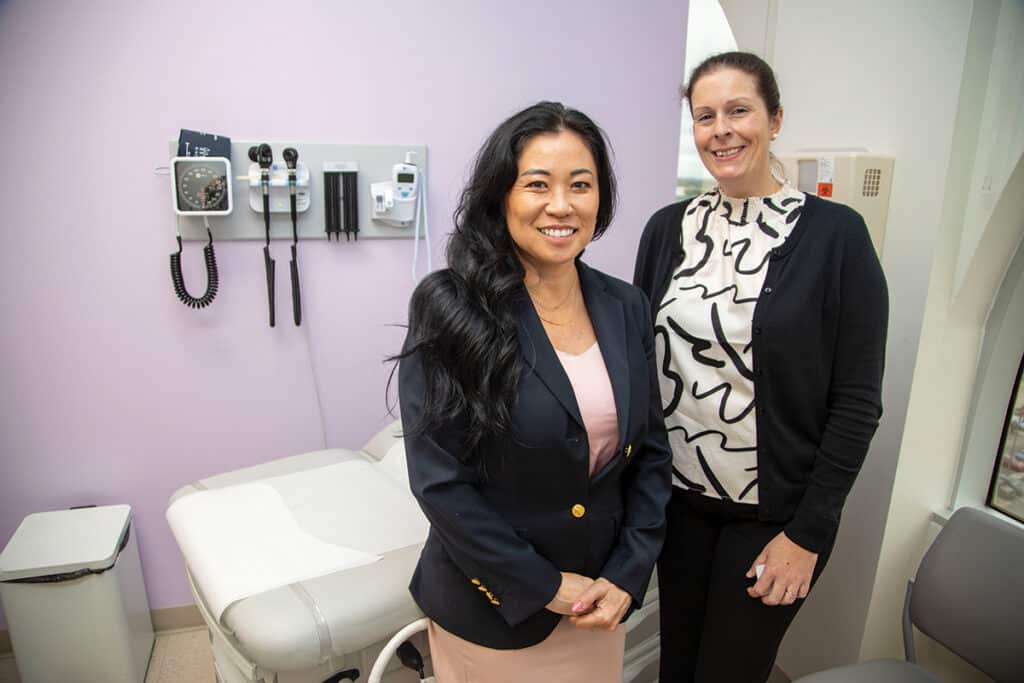
By Paul J. Watkins
Diabetes is a chronic disease that can have serious, long-term effects on a person’s health. It is a contributing or exacerbating factor in a wide range of other health problems.
Aaron King, MD, is a family medicine/primary care physician who practices at MedFirst Primary Care in San Antonio and is Associate Clinical Preceptor at the University of the Incarnate Word Medical School. “The national average for prevalence of diabetes is about eleven to twelve percent, depending on the source,” he explains. “In San Antonio, it’s about fifteen to sixteen percent. I attribute this high rate to multiple factors.
“One is weight. The San Antonio population is more obese than the average population. Another significant factor is that we have a large number of Hispanic citizens in San Antonio and that population is at increased risk for type 2 diabetes. Food choices are an additional factor. There are a lot of carb-heavy foods in the South. Finally, San Antonians are less active than most people. A sedentary lifestyle contributes to a high rate of diabetes.”
Dr. King says a person can have a genetic predisposition to developing diabetes due to the number of genes that could influence its development. Type 2 diabetes is not directly heritable, he notes, so just because a parent had it does not mean the child will have it. What it does mean is that the child has a higher chance of developing the disease.
The family medicine physician stresses that it is very common for a person with an abnormally high glucose level not to feel any symptoms at all. Feeling fine, he cautions, does not guarantee the absence of a glucose problem.
“People are often diagnosed with diabetes by the three classic signs of uncontrolled disease,” informs Dr. King. “These are polyphagia, or excessive hunger; polydipsia, or excessive thirst; and polyuria, or excessive urination. Other signs of diabetes are unexplained weight loss and fatigue.
“There are two major types of disease we identify as resulting from diabetes. The first is macrovascular disease, which is heart attacks, strokes, and clogging of the arteries. The second is disease of the small vessels in organs, namely the nerves, the kidneys, and the eyes. Those complications are equivalent in men and women.
“There are no symptoms or complications that are specific to women or more common in women. However, women are prone to genital mycotic infections, or yeast infections, much more than men. There’s a higher risk of developing those infections if you have diabetes.”
There are effective steps women can take to significantly lower the risk of developing diabetes. Dr. King says this is particularly true regarding an associated condition called “polycystic ovarian syndrome” (PCOS). Women with PCOS have about a 50% greater likelihood of developing type 2 diabetes in their lifetimes. If a woman is diagnosed with PCOS early in her life, she is at an increased risk for developing both type 2 diabetes and gestational diabetes in her lifetime. Reducing this risk means adopting healthy habits and addressing modifiable risk factors, such as poor diet and sedentary lifestyle.
“It’s important to know that body fat percentage correlates with the likelihood of developing diabetes,” says Dr. King. “The heavier we are, the more likely we are to have diabetes. Women, in general, tend to have a higher body fat percentage than men, probably due to normal hormonal differences. Women don’t necessarily need to be held to the same body fat standards as men to prevent diabetes. The best step women can take to reduce their diabetes risk is living a healthy, active lifestyle.”
Today, there are many medication options for treating diabetes beyond just insulin. Dr. King says women who are diagnosed with diabetes should ask their physician about those medications and which ones might be beneficial to them.
“There are two important families of drugs that we use that control diabetes and cause weight loss. The first is the GLP-1 family, or GLP-1 receptor agonists. When we give these at higher levels, we get a much better natural insulin production from the body. We lower glucose that way, and we also regulate appetite better, which results in weight loss. The two most common medications in these families cause fairly significant weight loss, between ten and thirty pounds on average.
“The second family is the SGLT-2 inhibitors. These have become our preferred agents to use with metformin, which is a classic diabetes drug that does not cause weight gain or weight loss – it is weight neutral.”
Dr. King concludes by saying that some families of diabetes drugs have data showing essentially lower rates of heart attack and stroke and emerging data on kidney protection, so diabetes treatment can also provide women with these extra benefits, especially if they are at risk for one of those serious conditions.
For more information or to make an appointment, please call (210) 892-3589 or visit www.MedFirstPrimaryCare.com/FindADoc.




